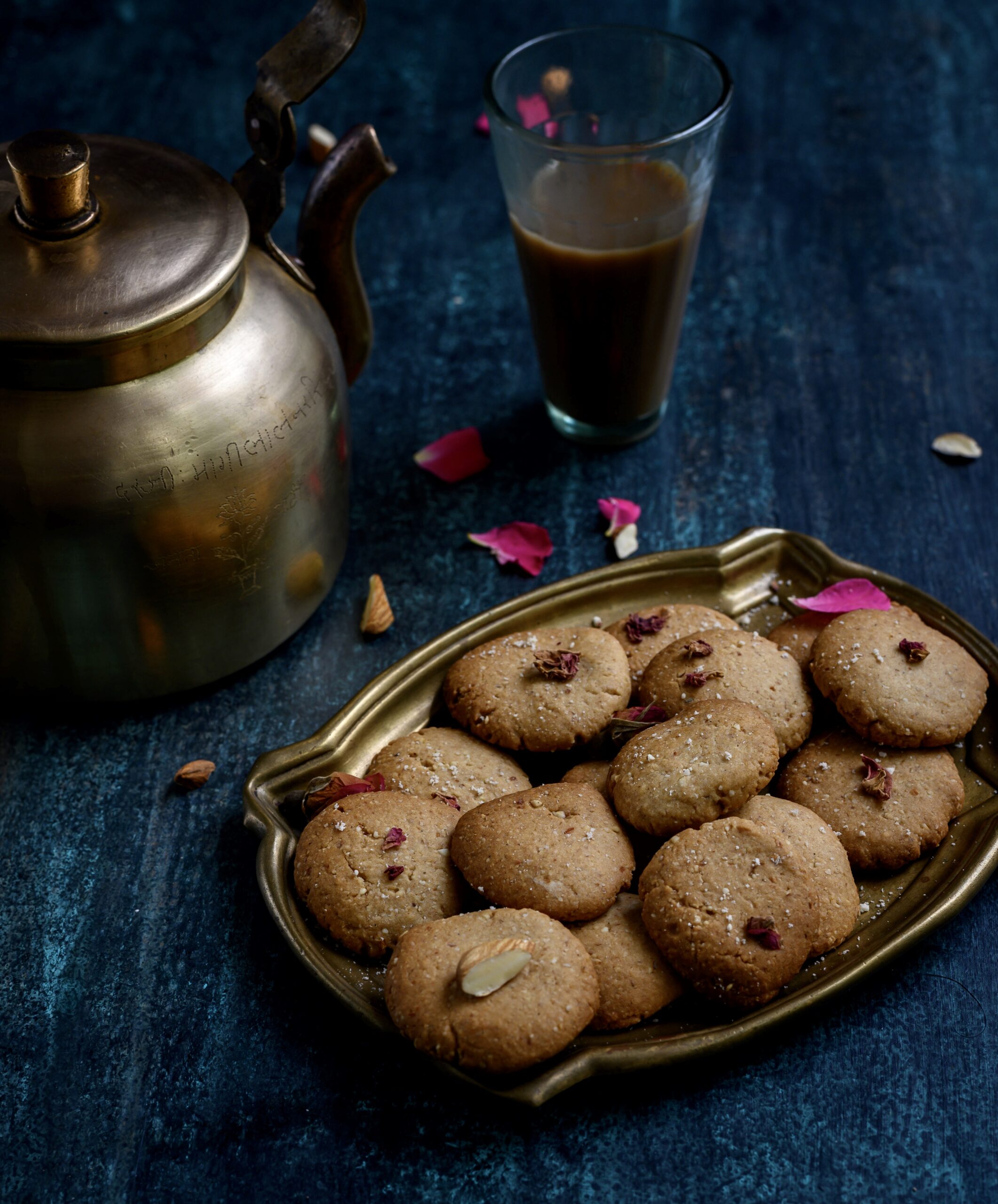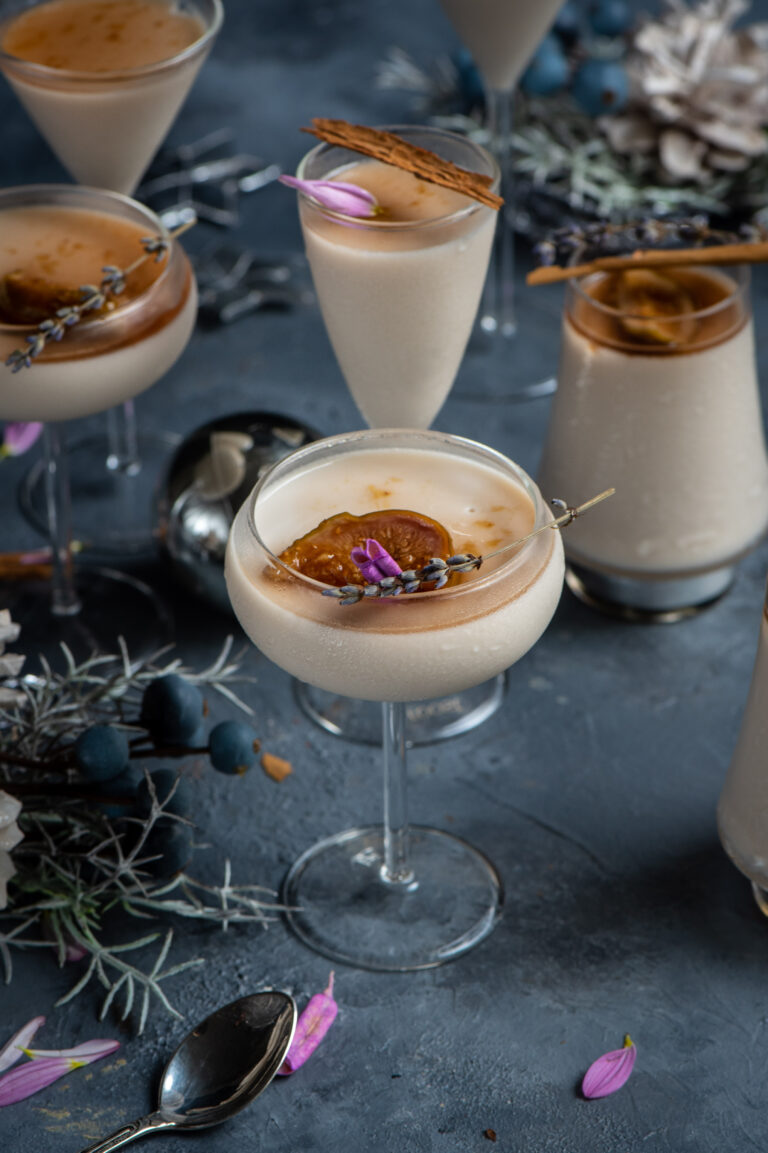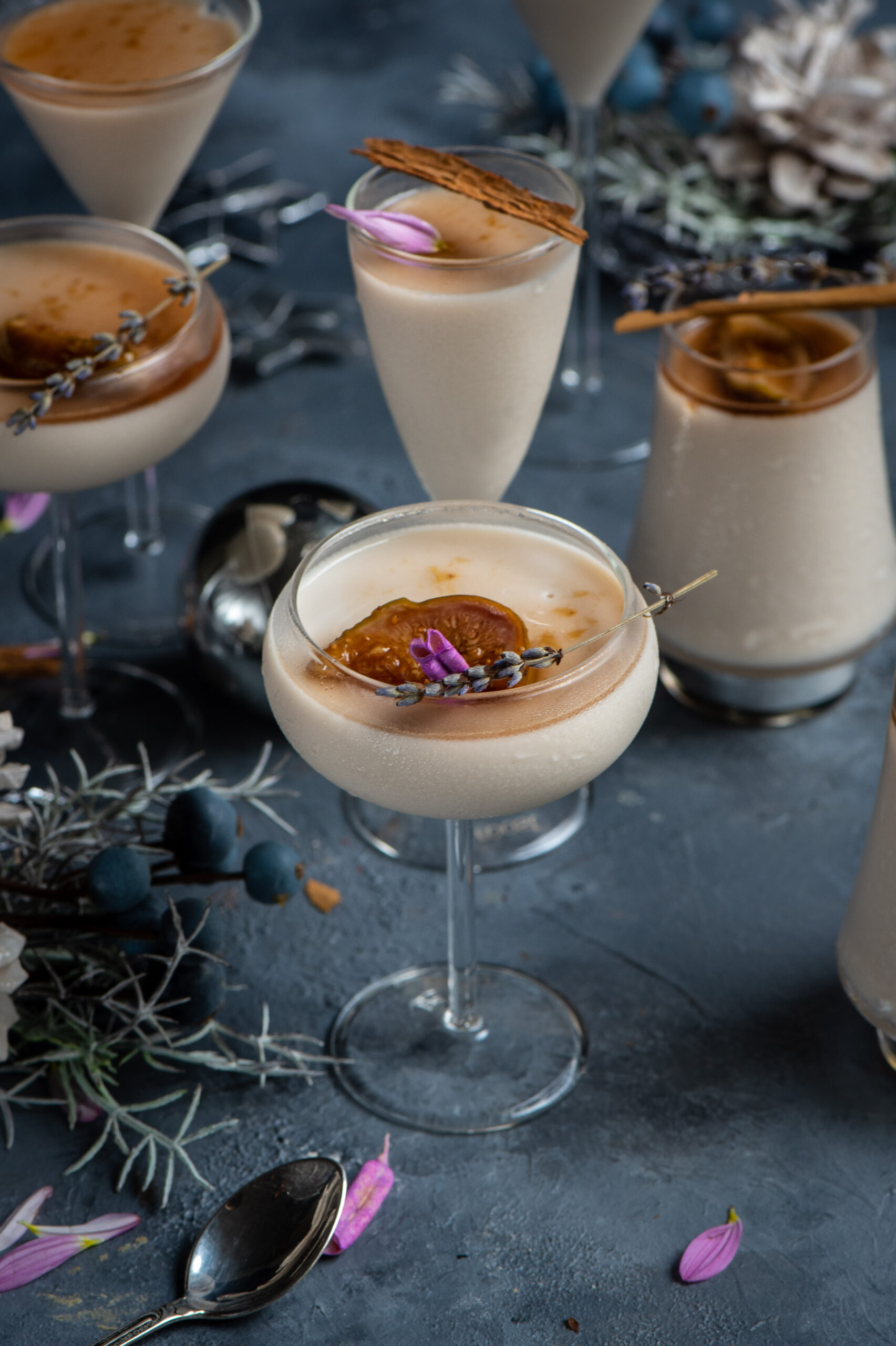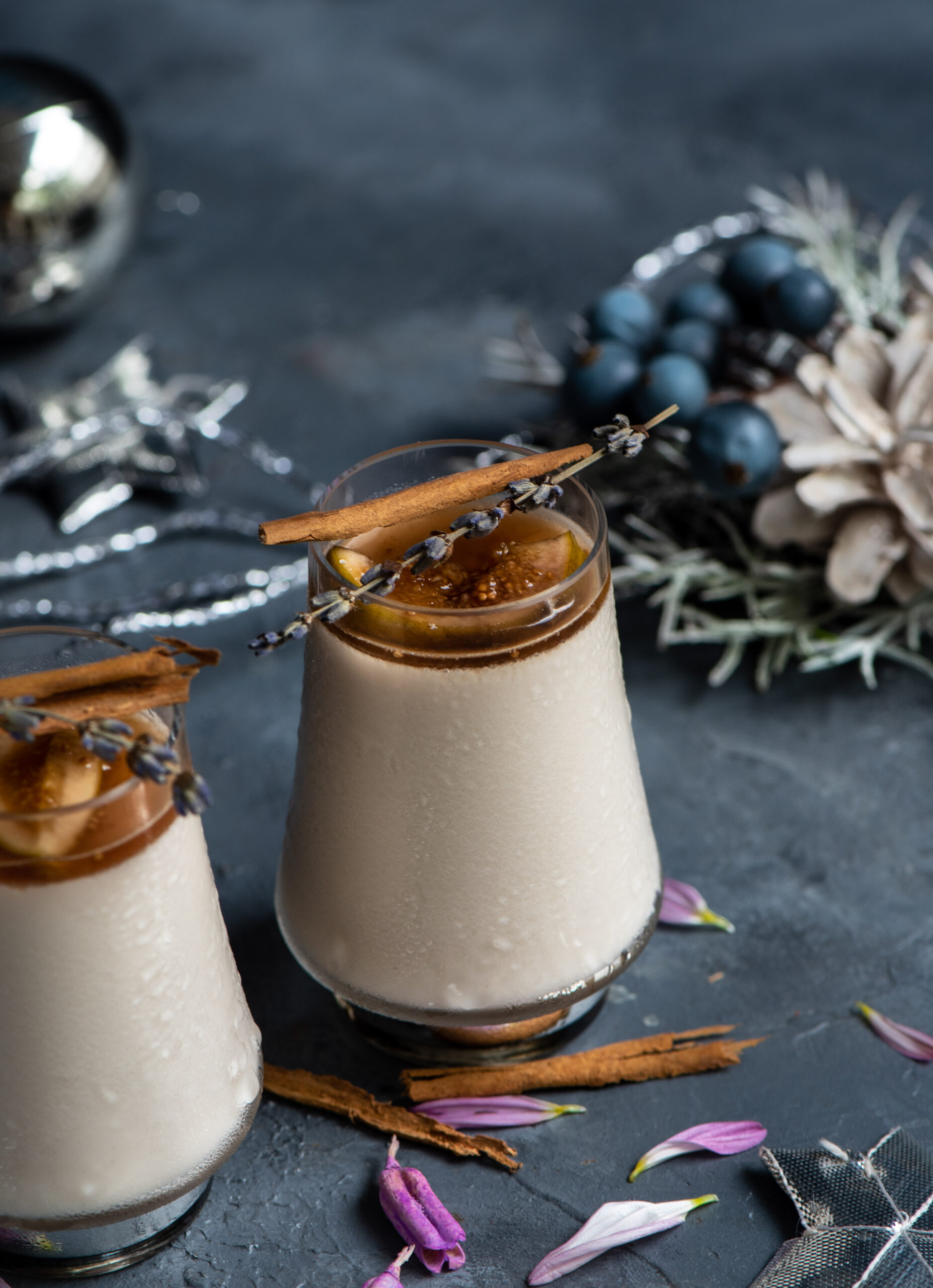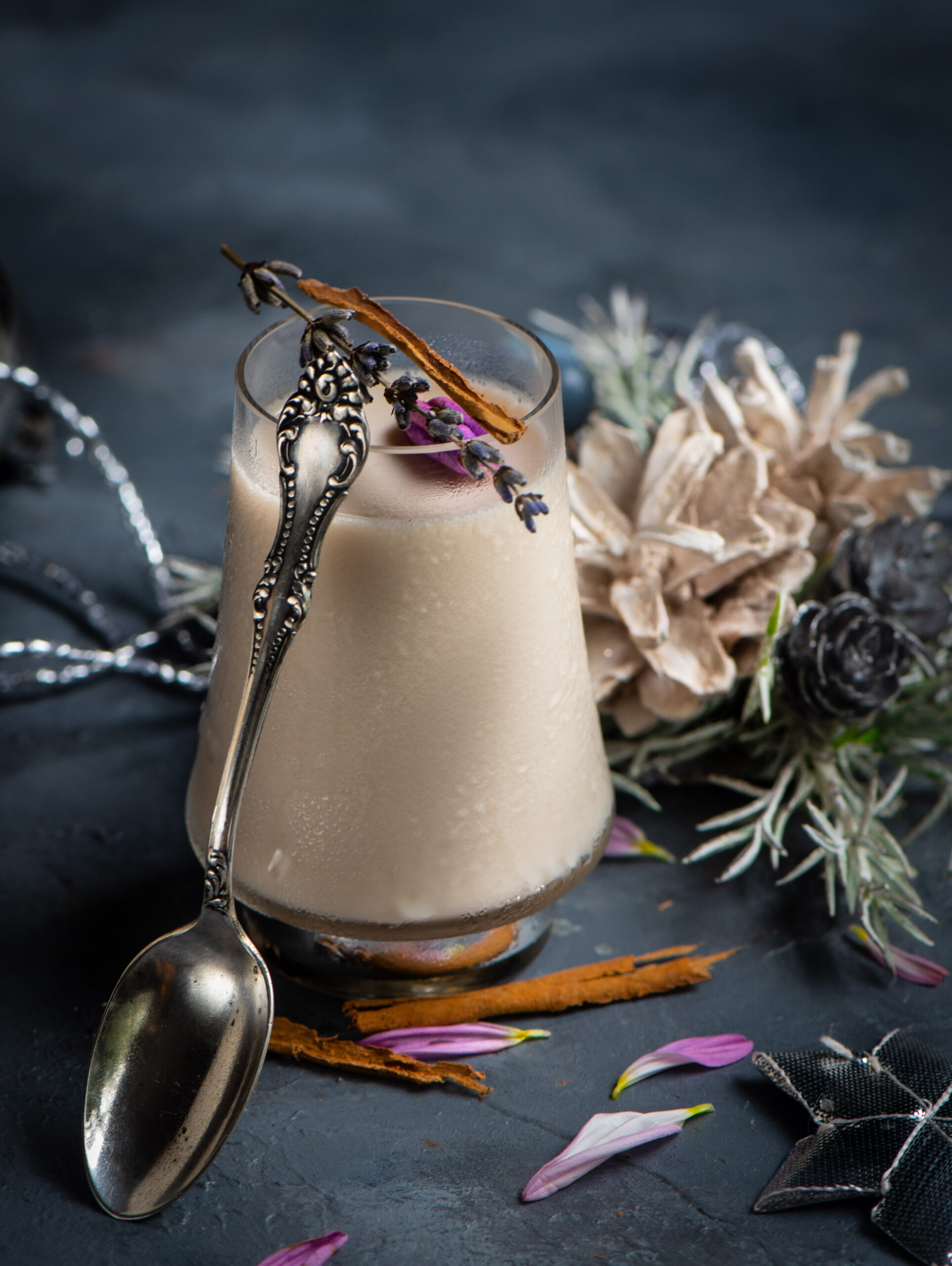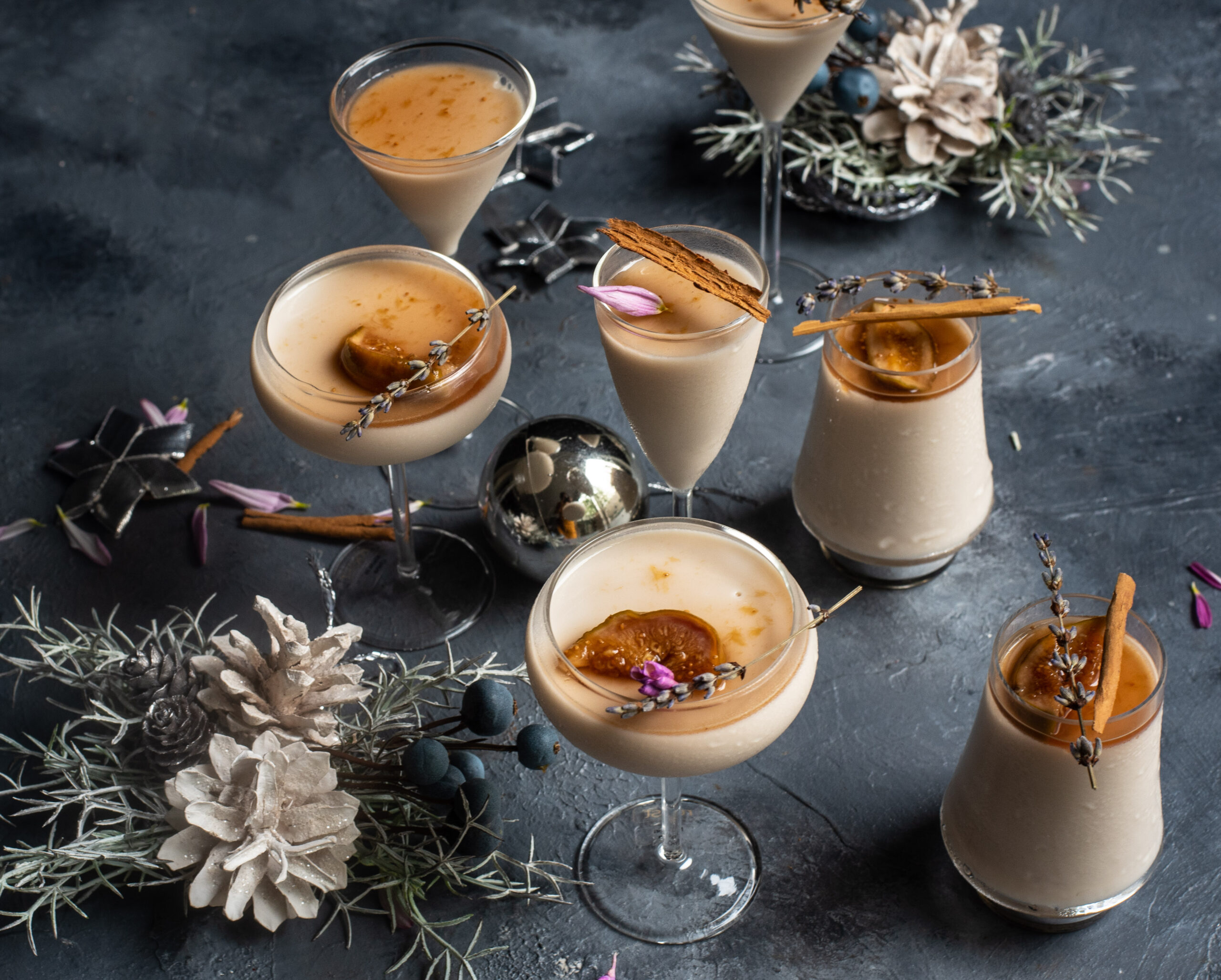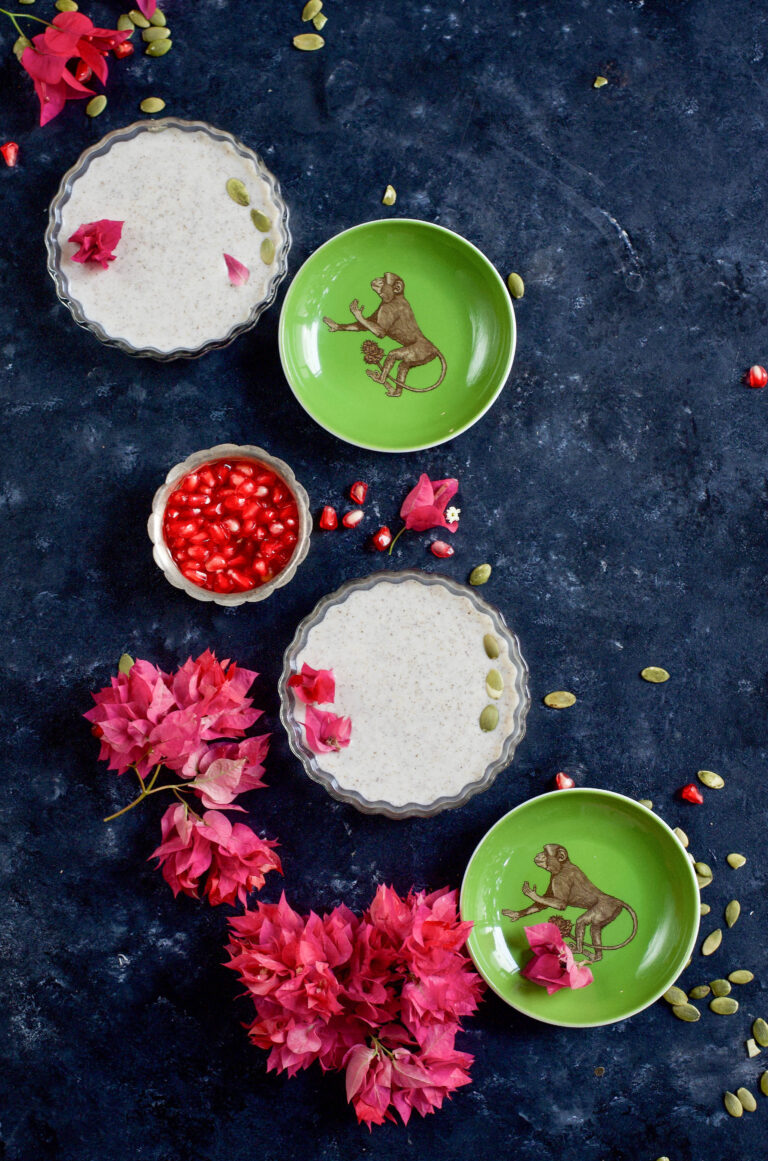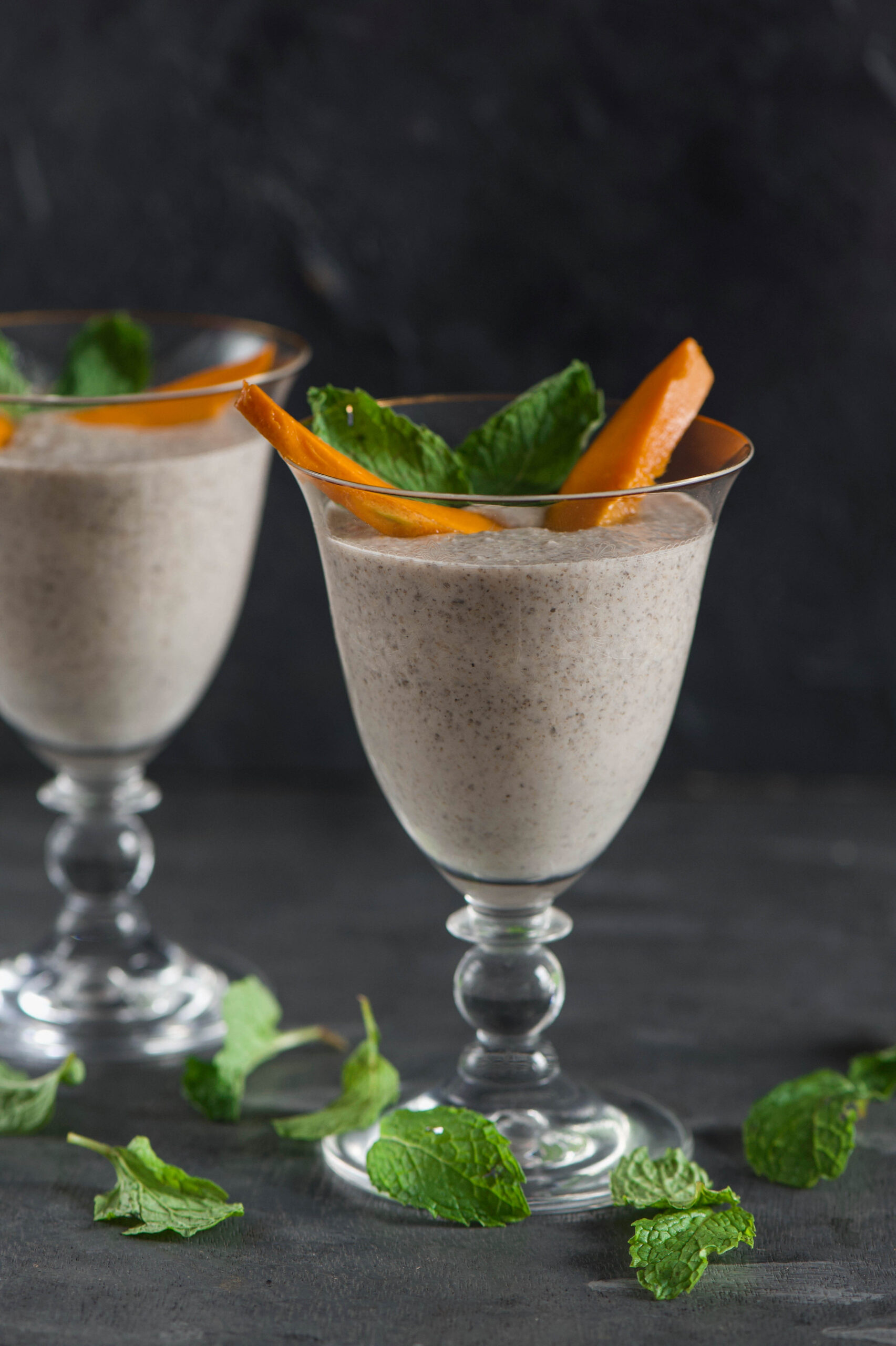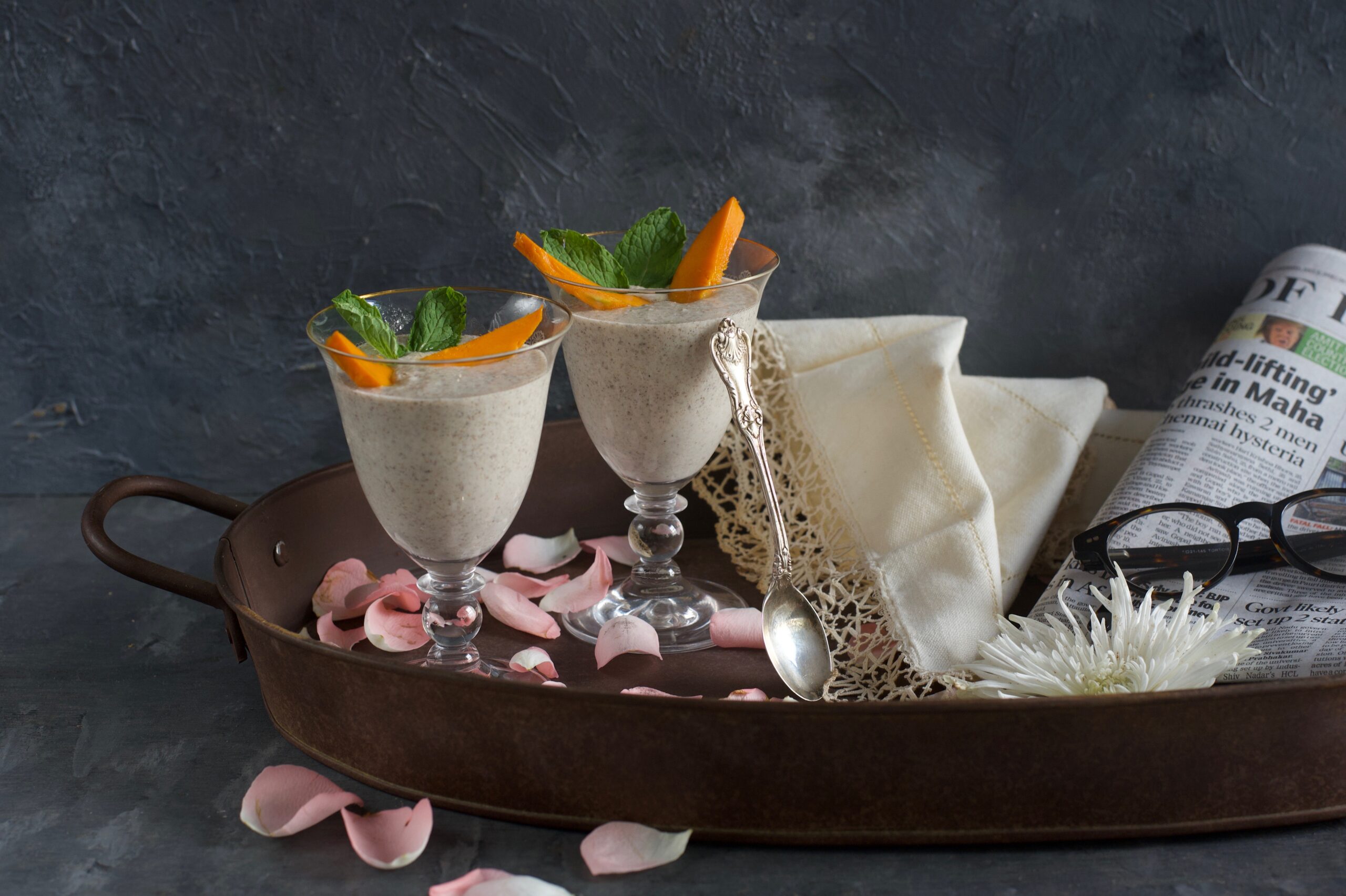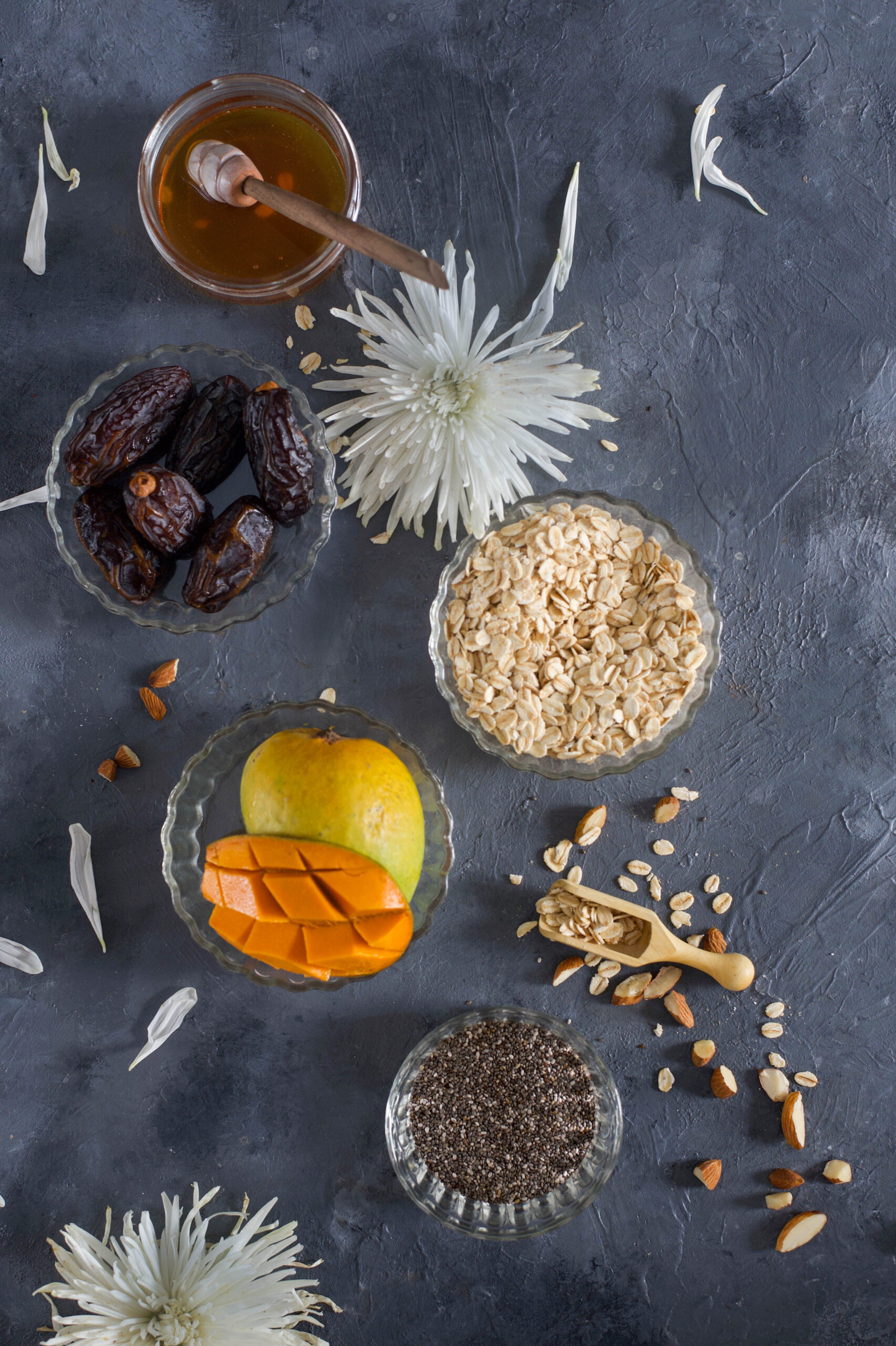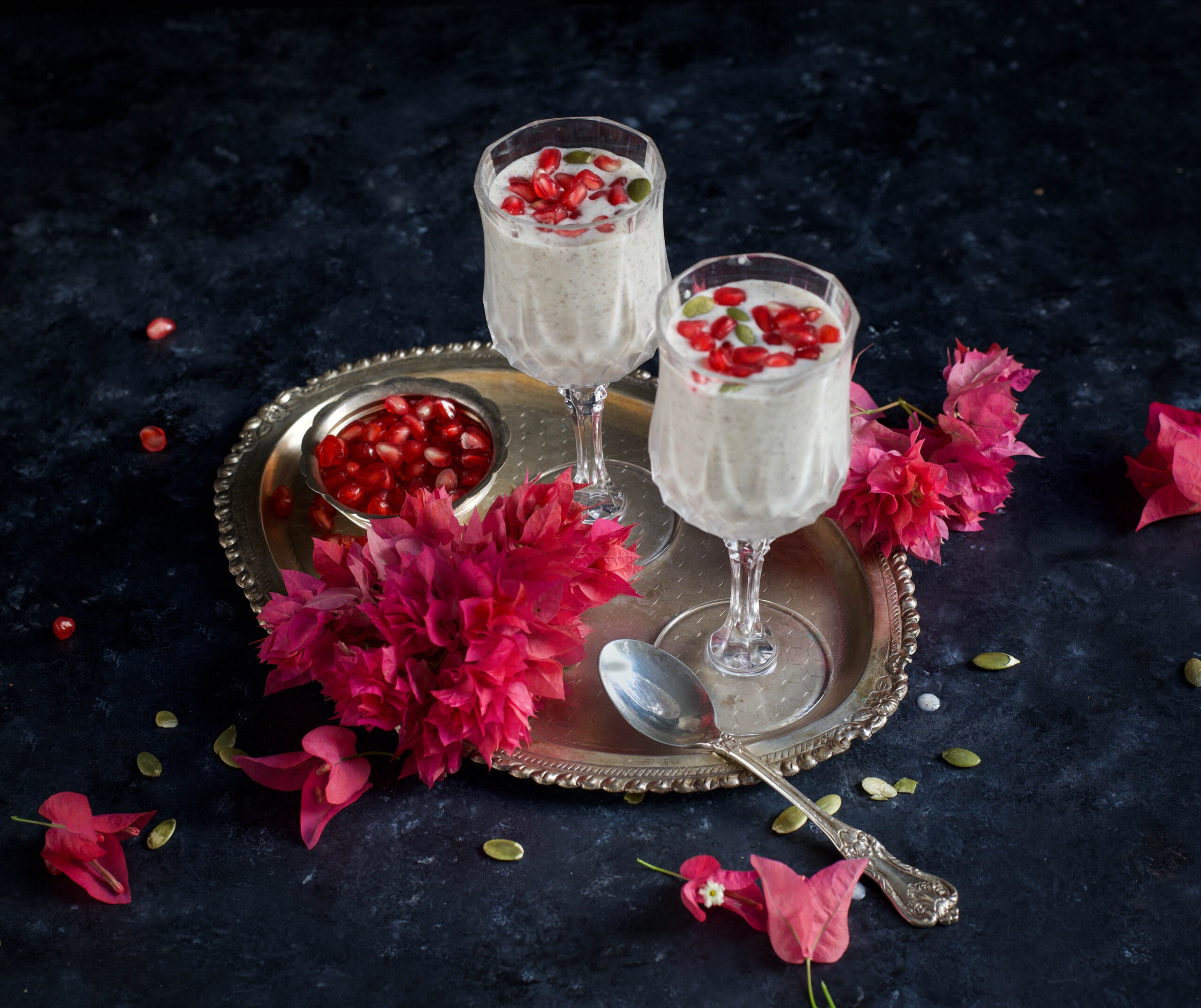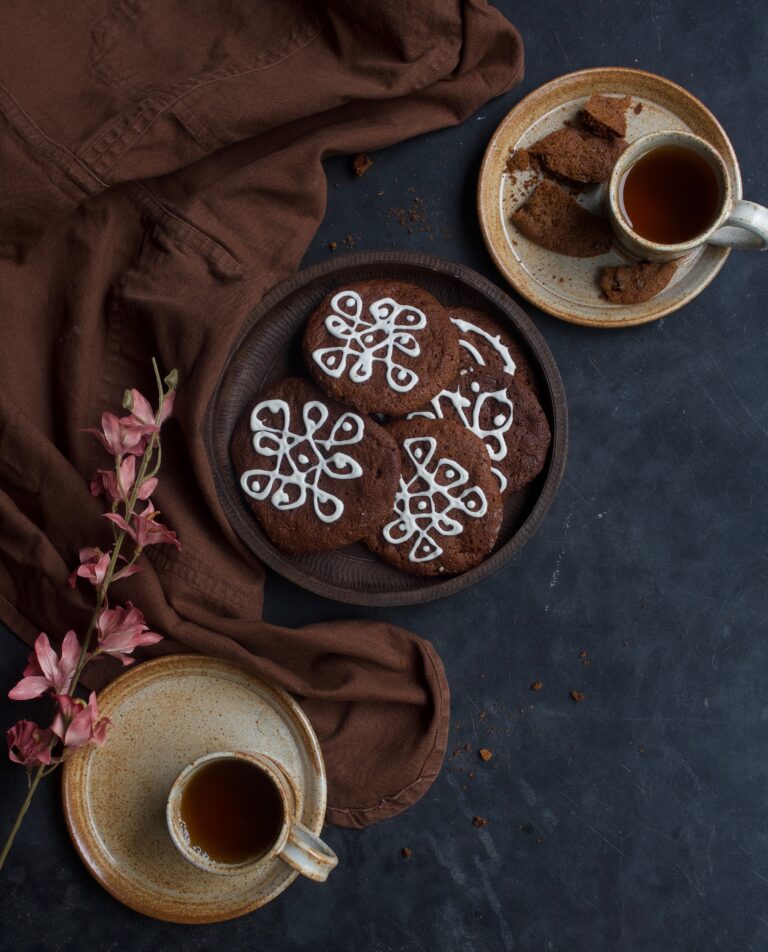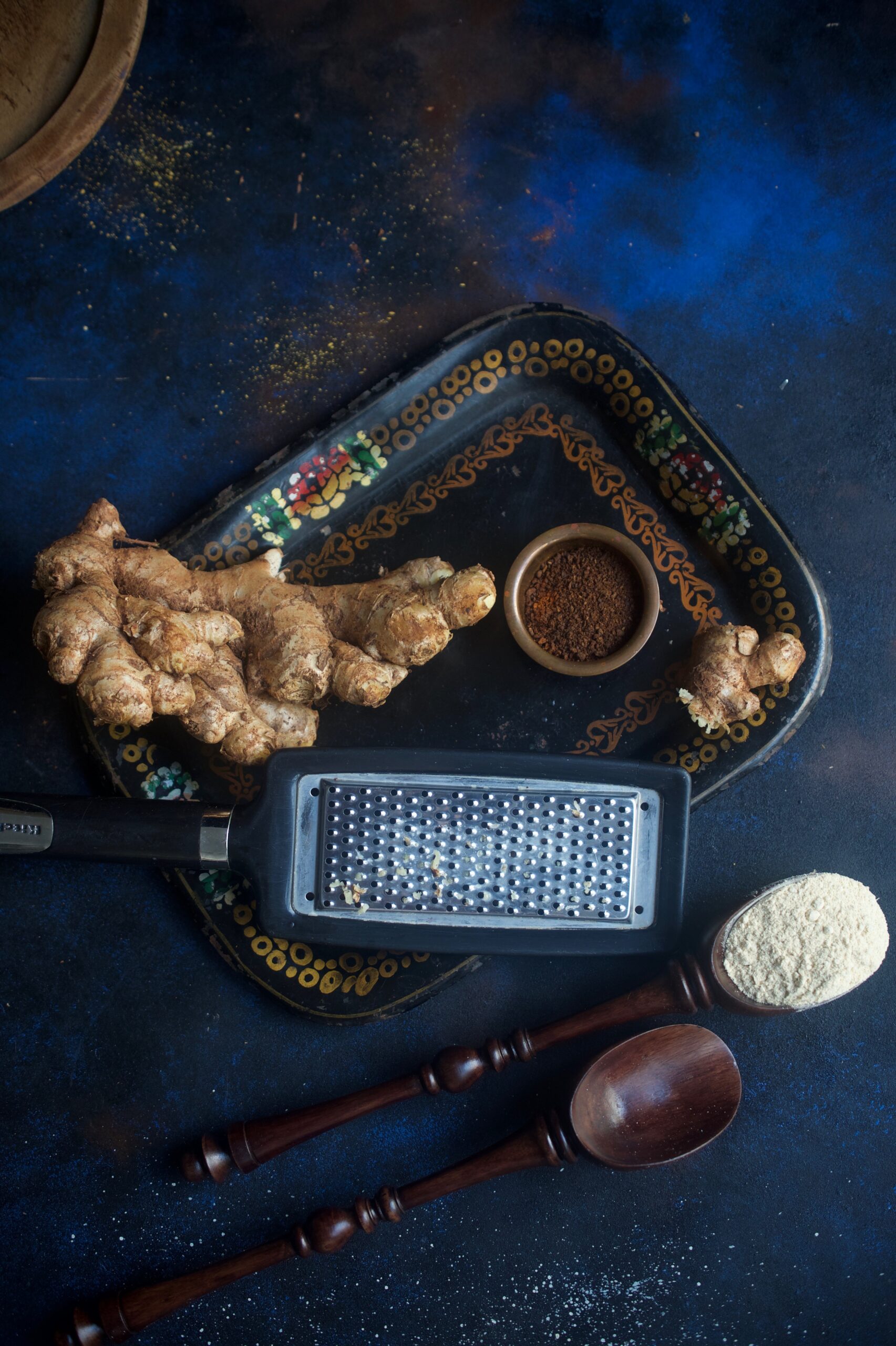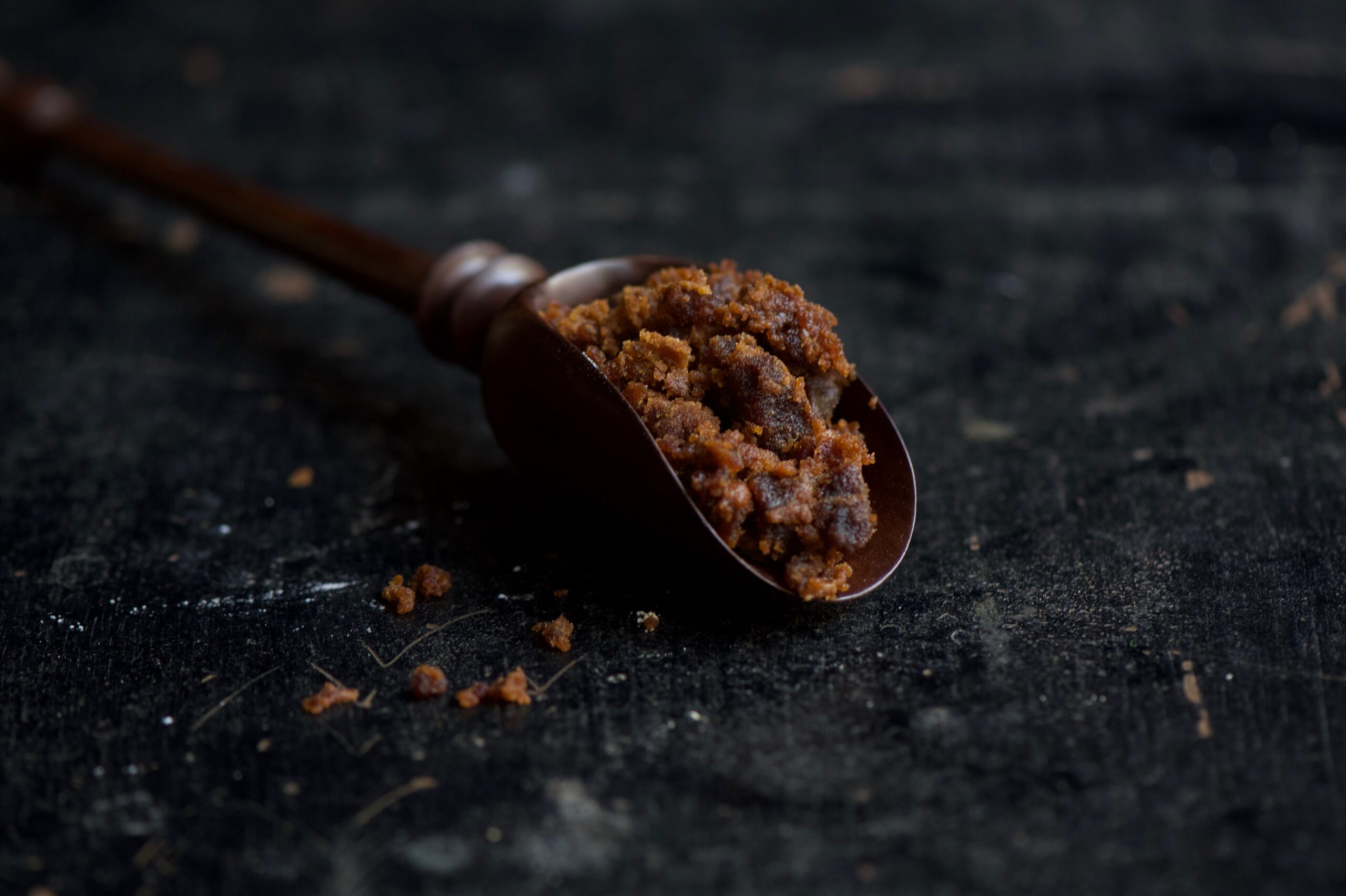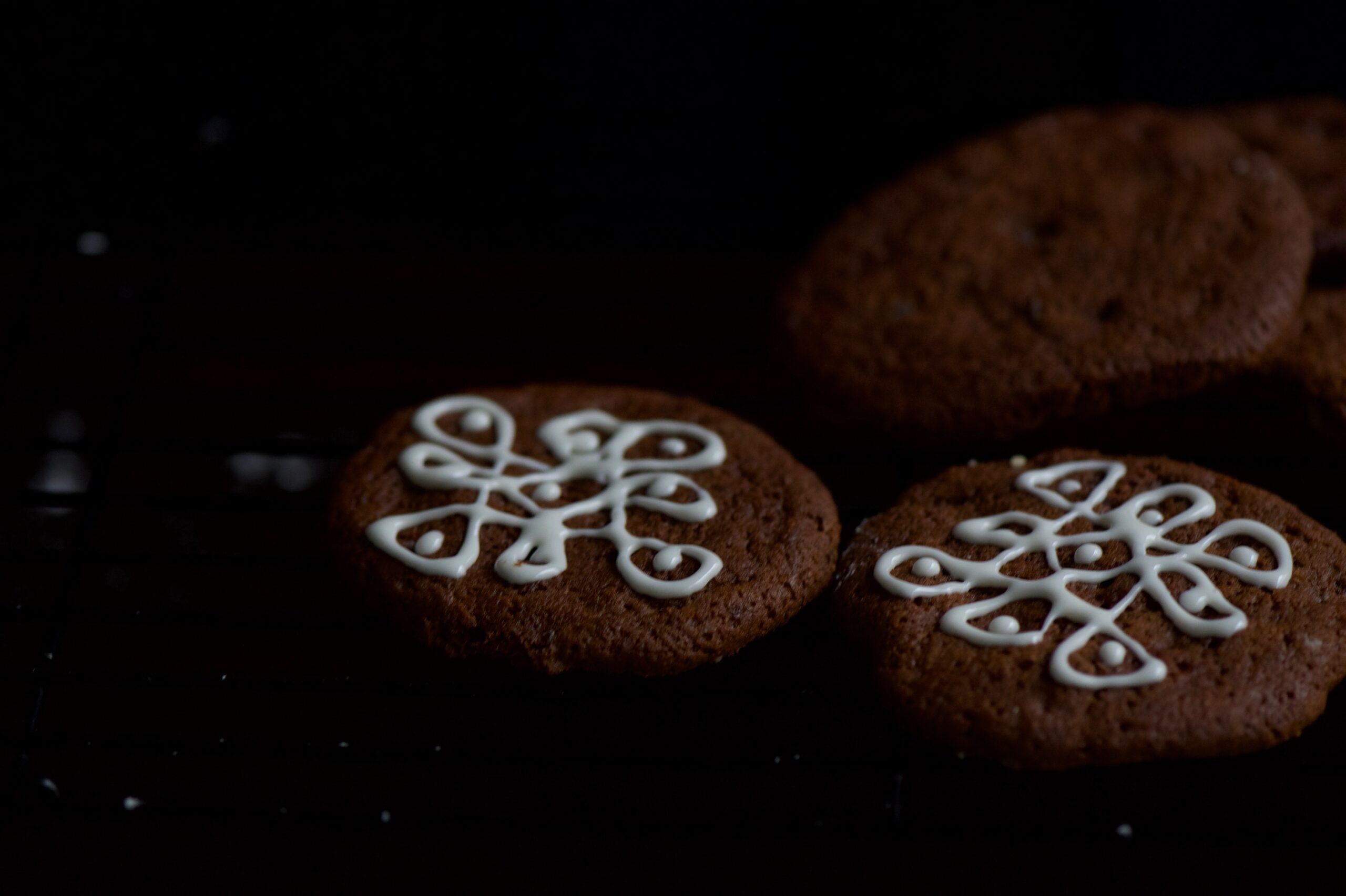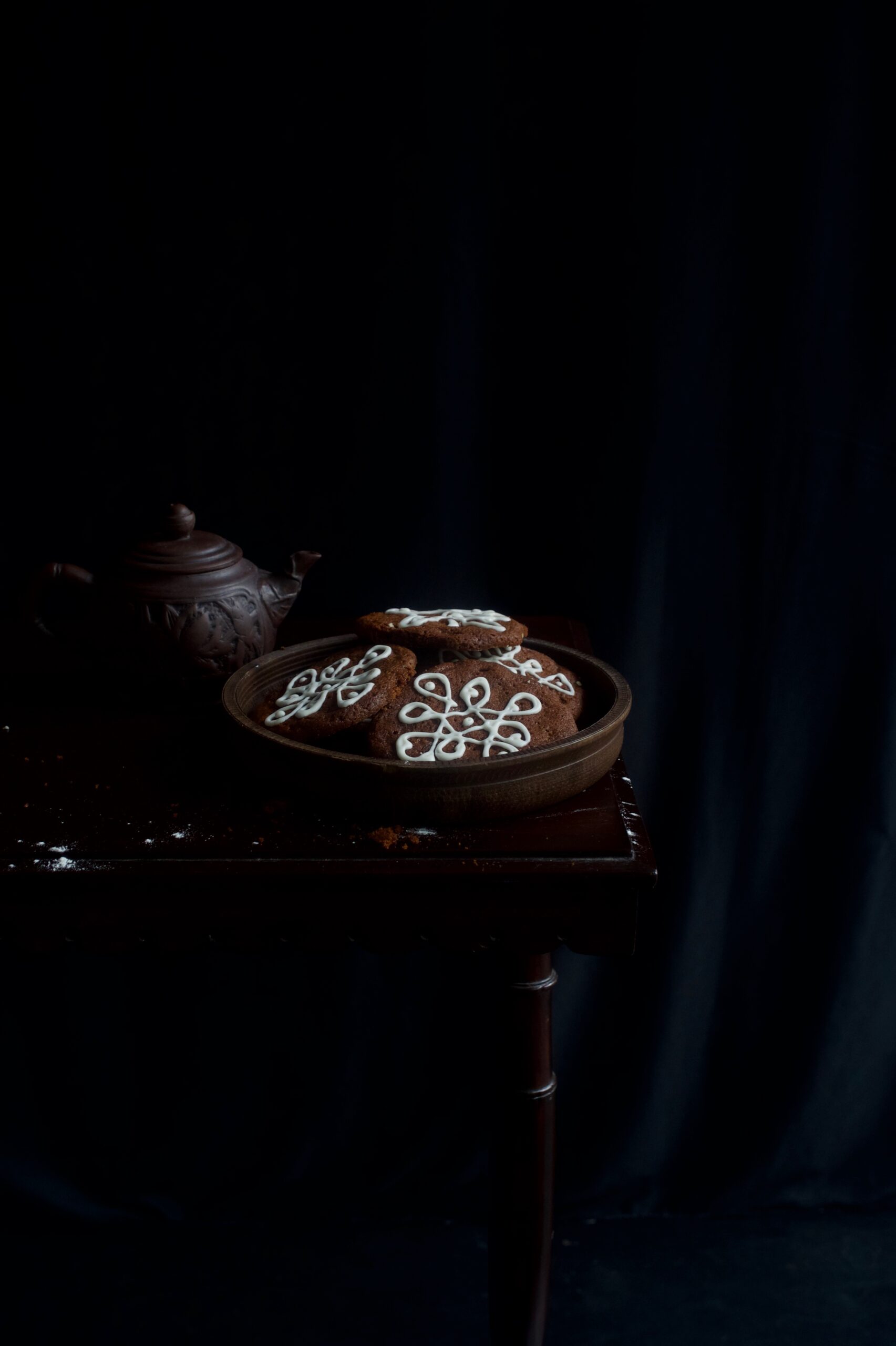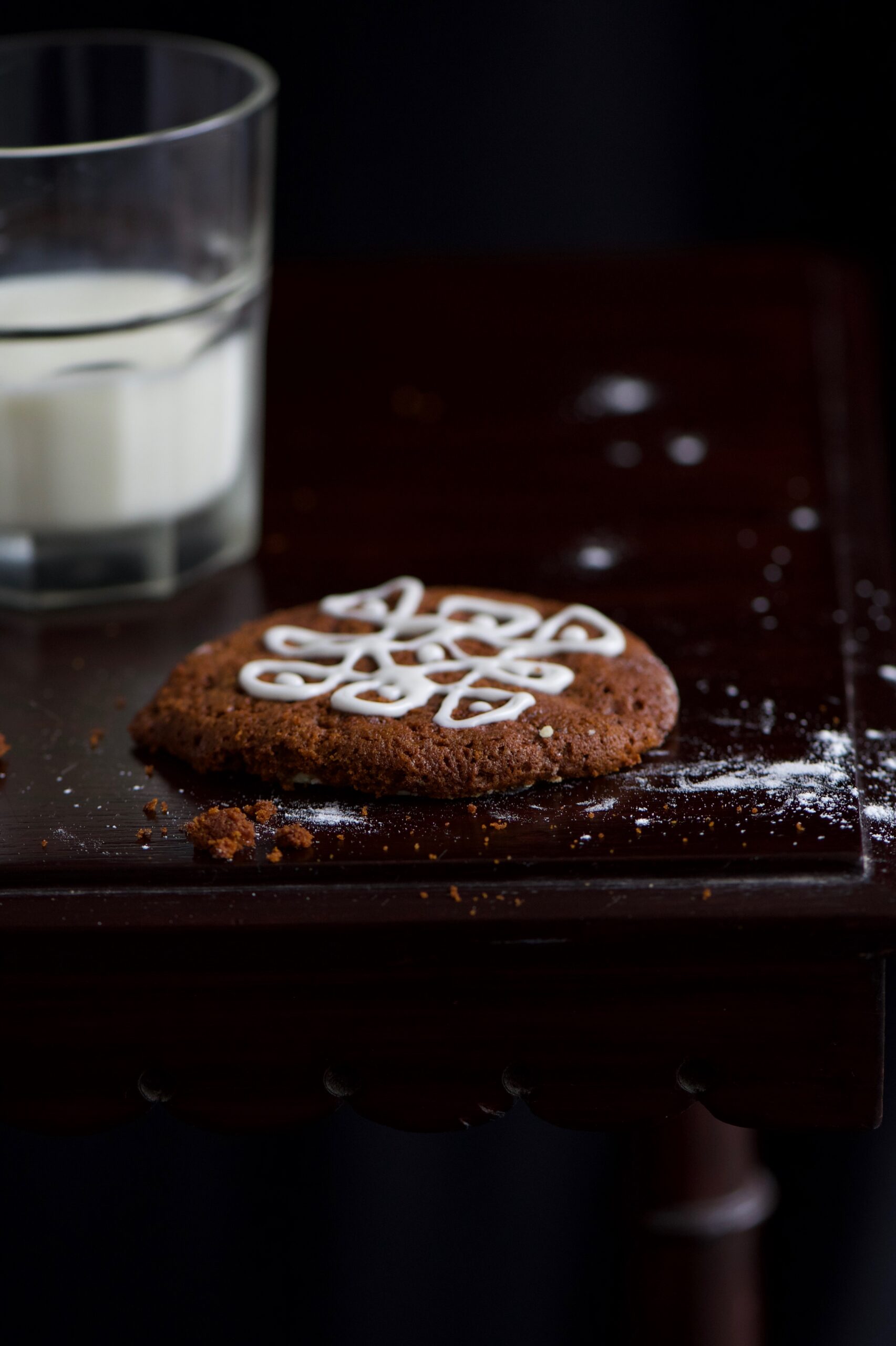Every day, I wake up thinking: “What shall I bake today?” My work schedule begins with this question. By the time I walk into my kitchen, I am already excited about conducting a new trial of some kind. Whether on a whim, because of excitement over an item freshly in season or gifted to me by a friend, or thanks to setting a challenge for myself, I’m looking forward to an experiment. Often, I’ll already be thinking of how the finished dish can be styled for a shoot, even before I make it. These culinary experiments are a great source of pleasure and learning for me. In this way, the re:store repertoire constantly grows.
When the day is not cluttered with a hundred things to do, I can bake especially peacefully. I pull out cookbooks and pore over them. Sometimes it’s the beauty of the photographs that pulls me in. Sometimes it’s a single ingredient, either something exotic or a familiar one that I want to use in a special way. Most mornings, it’s something new. Something different. Even the beauty of a book on architecture or on art can excite me, reminding me of my travels and my memories. Or it could be words from a poem. Or even the colours worn by a group of people I may have seen on the street on the previous day. Something will make me reach for certain ingredients or search for certain recipes. It doesn’t always work, but even then, I enjoy the challenge of going, “Damn, what went wrong?” and finding a way around the snag during the next trial.
As I was raised in a household which observed the tradition of never eating food before it was offered to God (which meant that there was no dipping a spoon or a finger into the pot as we cooked), I learned early on how to tell on sight if a dish is ready. I can gauge if it will taste good, or otherwise. So I usually have a strong sense of how an experiment will turn out even as I’m in the midst of it. Of course, there are occasional dull moments when I feel like I’m dragging my feet, and I think something is doomed to fail, and that’s exactly when it doesn’t work at all. I’ve come to understand that space and mood are vital components for these culinary experiments. And when I get it right, I want to share the results immediately – with everyone! My friends and family get the first slices, scoops and sips. And then, there is this blog…
In addition to books, photos and memories, a well-stocked kitchen is often the beginning of inspiration for me. Many Indians love almonds, also known as badam, both for their taste and for their nutrition benefits (which include skincare, lowered cholesterol, weight management, improved eyesight and much more). In my case, there’s always almond meal or almond flour in my house, and it’s an ingredient I reach for liberally. As I’ve said so often, a belief in the goodness of homemade food is at the heart of everything at re:store. Most of the flours and powders I use in my kitchen – from turmeric to chillies to chickpeas and more – are sent to be ground in small batches at a trusted mill. The same goes for almond flour and all the others that I use in my baking.
One recent morning, my brainwave was to conduct a trial for a sugar-free version of the almond cookies that are a staple in my home. As we get older, we have to be more watchful of our food intake both in terms of quantity as well as where problematic ingredients are concerned. Sugar is a big culprit when it comes to health issues, and often the first thing that experts recommend eliminating or cutting down. Ever conscientious of eating well, I find myself increasingly attracted to desserts which use other natural sweeteners. These include maple syrup, coconut sugar, barley malt, honey and jaggery. That famous Gujarati sweet tooth can’t resist temptation. These days, I try to make sure that when my cravings hit, the treats within reach are sugar-free.
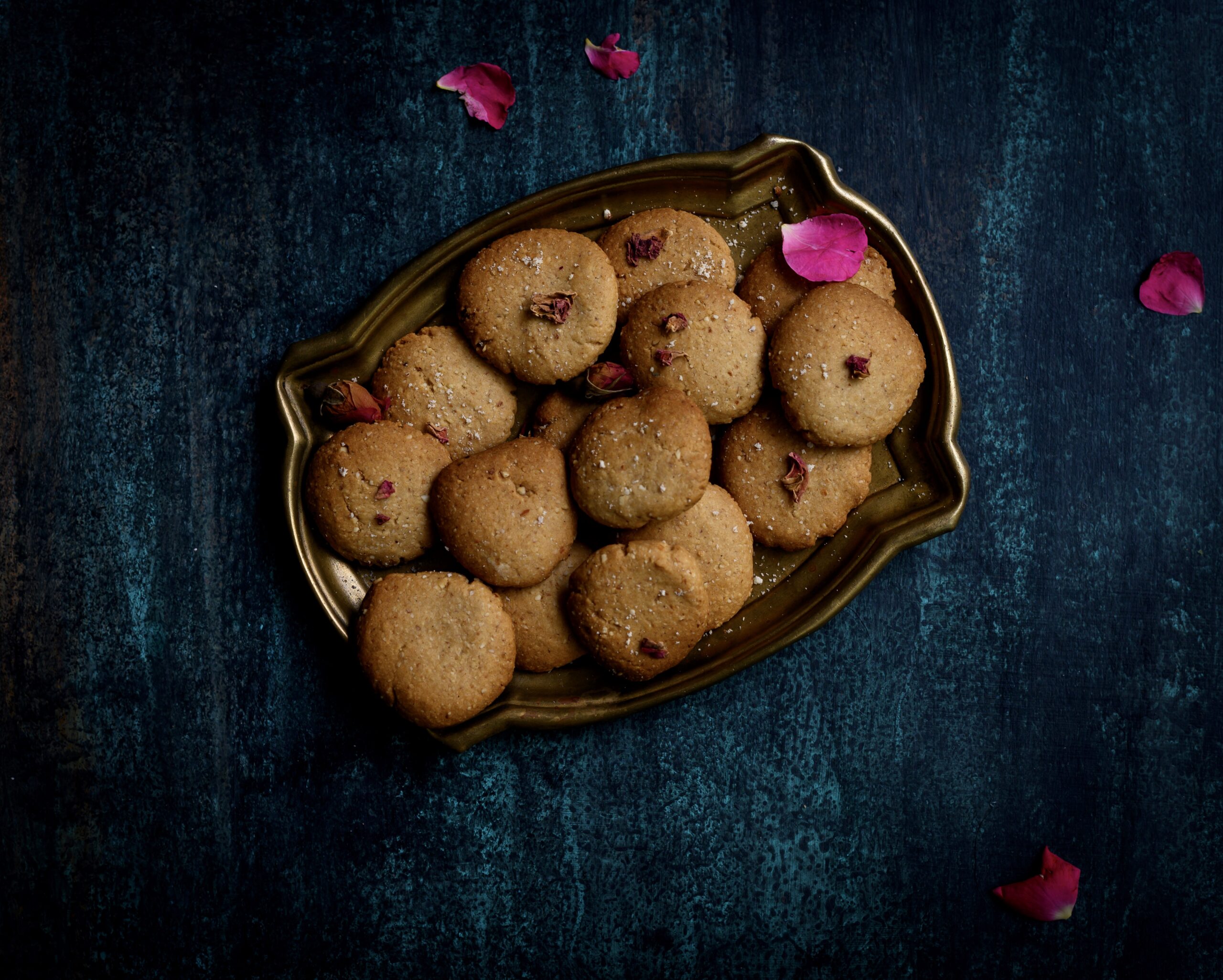
You know how much I love my tea-times and simply must have a crunchy bite to go with my hot drink. This is true not just for me, but equally so for my Max. The moment he sees the cup in my hand, he comes bounding up, salivating for his own biscuit.
This is what we’ve been enjoying over the past few days. An almond cookie is a classic – and this sugar-free, eggless version is one that will capture a lot of hearts. And I can assure you that it comes with Max’s stamp of approval!
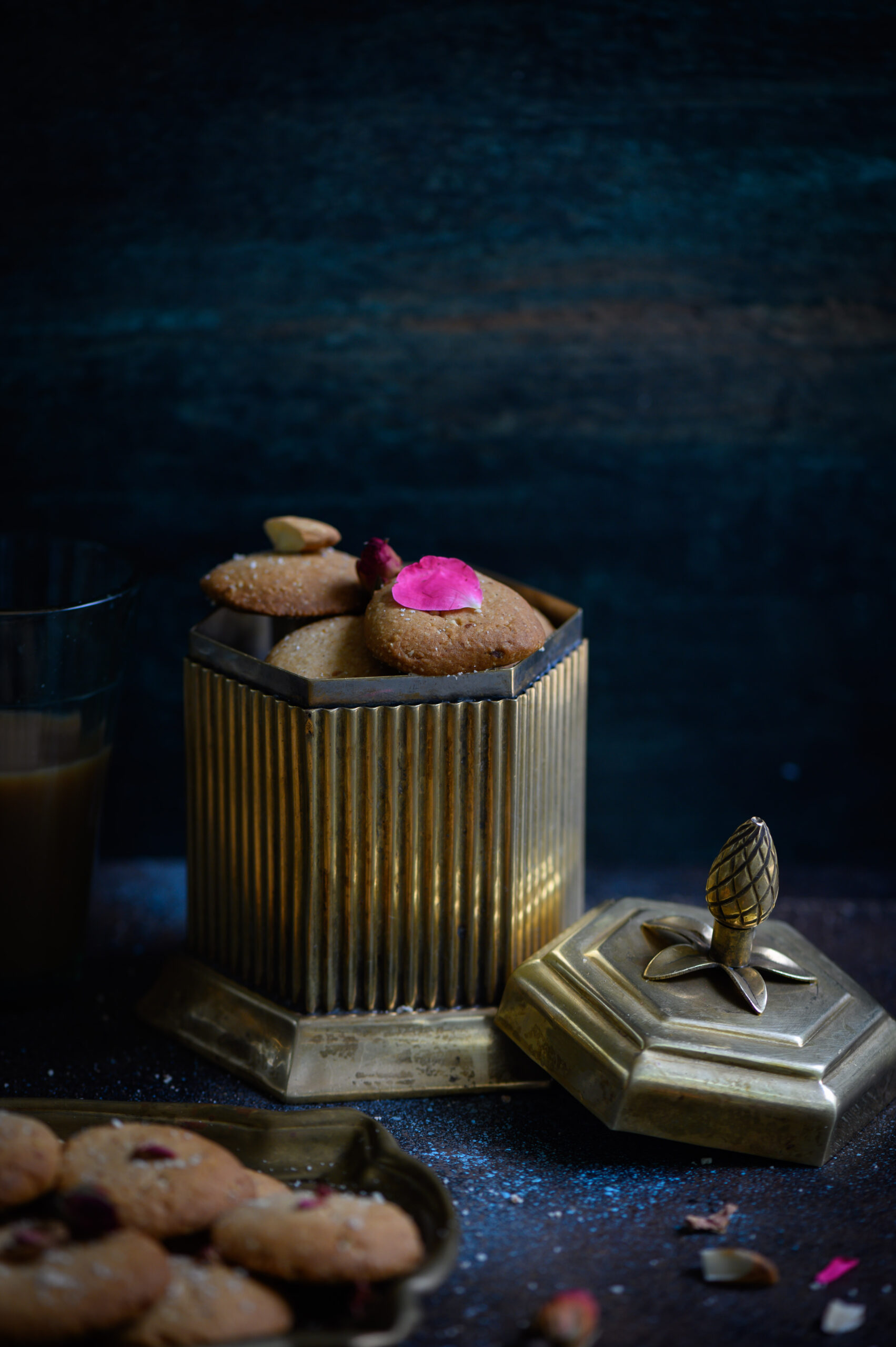
Sugar-Free Almond Cookies
(Yield: 15-20 cookies)
1½ cups oats flour
¾ cup whole wheat flour
¾ cup maida
1 cup almond flour
1 teaspoon baking powder
½ teaspoon salt
½ cup oil
½ cup honey
½ teaspoon vanilla extract
¼ teaspoon rose extract
¼ teaspoon rose water
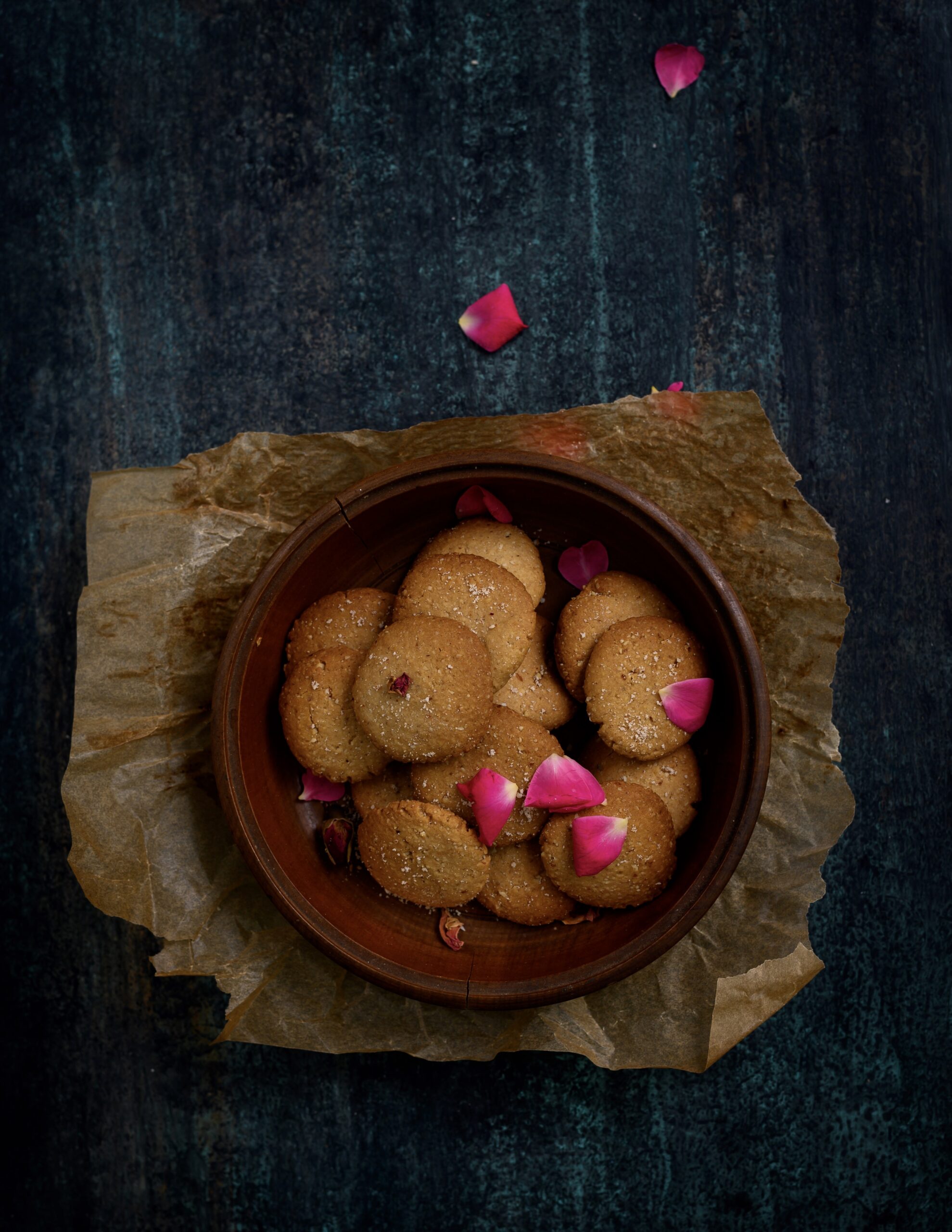
Preheat the oven to 150°C. Prepare a baking tray and keep it ready.
In a mixing bowl, add all the dry ingredients and whisk well. Then, slowly add all the wet ingredients into the dry ingredients. Mix them all together with your hands gently until they become one whole mass of dough.
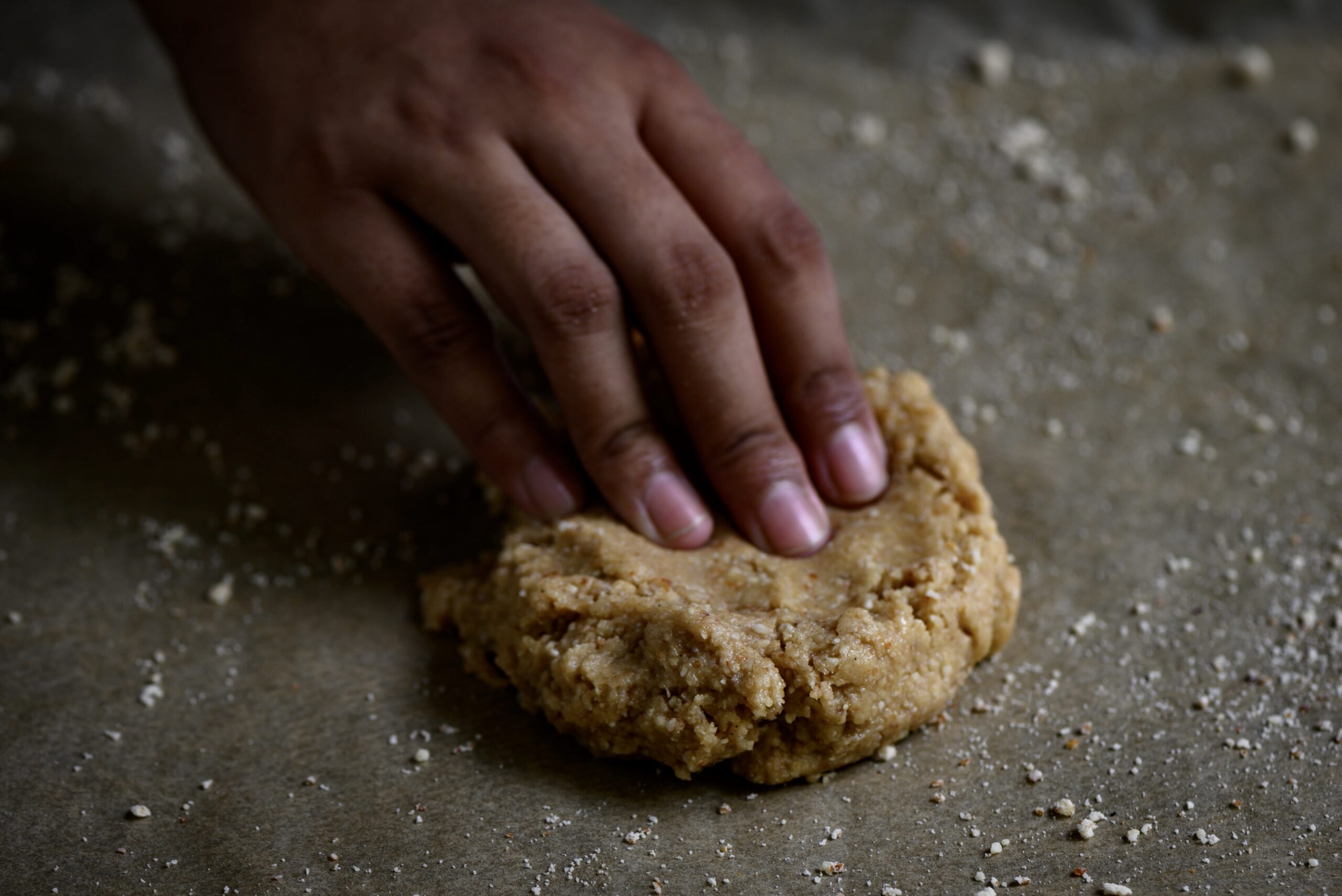
Now, make small flat discs and place them in rows on the baking tray. Bake in the oven for 10-12 minutes or until they turn golden on the edges. Remove and allow to cool on tray for about 5 minutes. Remove them onto a cooling rack.
They are ready to serve, and if you wish to, you can decorate them with any toppings or icing of your choice.
On one of my recent Instagram posts, you would have seen another one of my successful latest experiments: pista-rose cookies, which combined two of the more popular flavours on the re:store menu. The next time I make it, I’m going to try and adapt this recipe to do so, replacing almond meal or almond flour with pistachio meal or pistachio flour.
With the kinds of cravings for sweetness that I have, finding and incorporating sugar-free desserts into my meals is a necessary, healthier choice. These sugar-free almond cookies are also eggless, as you may have noticed, which makes them the perfect choice for vegetarians. Vegans may opt to substitute honey with a sweetener of their choice. As I said earlier, this recipe came about through a process of experimentation. What next? As I write this, I’m already wondering: what about an almond kachori? Innovative uses of readily available ingredients are practically a daily adventure for me now.
Since I’m not giving up the crunchiness that I need with my cup of tea anytime soon, I’m delighted to have these sugar-free almond cookies around. After all, they are not only free of sugar, but in being so, also free of guilt!
